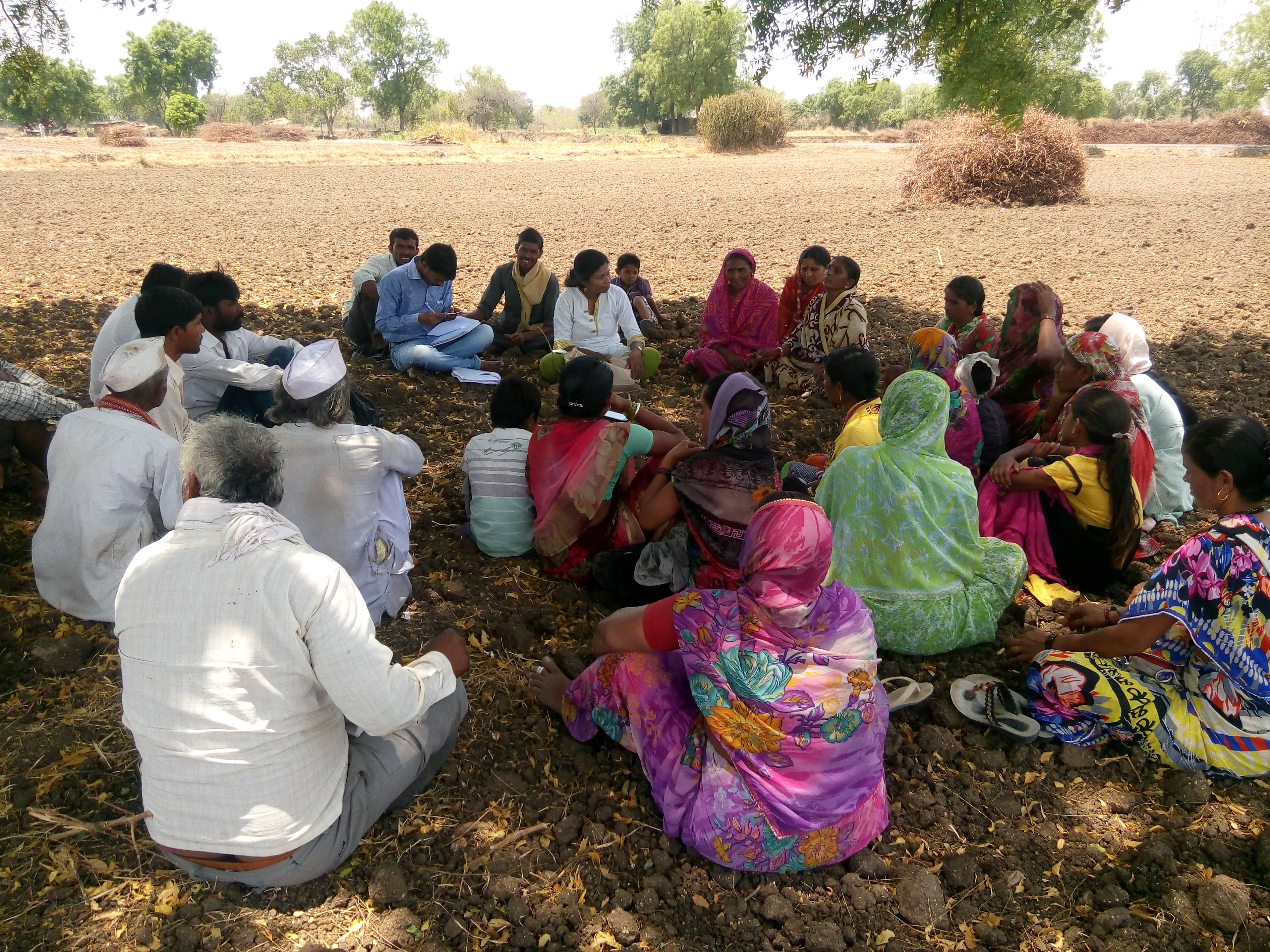– Yogesh Shinde
In the month of April 2017, our team visited Padmavati village in Bhokardan block of Jalna district, Maharashtra to carry out a community driven vulnerability assessment study.
Different stakeholders from the village were invited to participate in focus group discussions, aimed at sharing the major changes that had been observed over the years. The villagers narrated that communities preferred growing cotton, ground nut, pulses, wheat and sorghum. Mono cropping system was mainly followed to harvest these crops. Moreover, these farming activities were labour intensive and modern technologies were not much in use. Local varieties of seeds were preserved and used for sowing. Wells and streams were the only sources of irrigation. Most of the produce was used for home consumption and the surplus was sold in the market. Besides that, the village lacked the support from the government nor had any active groups like farmers association or self-help groups (SHGs) to work for the upliftment of it.

In 1994, the government proposed to construct a water harvesting structure in the village. However, the entire village needed to be rehabilitated for the same. The government authorities assured to provide land for agriculture and housing in the forest land of the village itself. After having a common agreement, construction of the water harvesting structure began.
After the construction, the availability of water for livelihood and home consumption increased. Farming still served as the major income source for the villagers. However, the methods and techniques had undergone a transformation. Modern agricultural practices became extremely common in the village. Farmers started using hybrid and improved variety of seeds over the traditional ones. Perennial irrigation became available for farming. Importantly, most villagers started growing cash crops like chili, maize, soybean, onion seed, ginger and vegetables. Some farmers planted orchards like pomegranate and sapota in their farms too. Four SHGs are operational in the village, playing a crucial role in providing micro-finance . Farmers group are also functional; few of them are members of the Farmer Producer Company in nearby villages.

On the other hand, it was interesting to note the observations shared by the Sarpanch, Mr. Ramesh Tarale , he said, “The village has been prone to unseasonal rainfall, rise in temperature in the summer season and even hailstorms in the past. However, we have not faced drought like situations for the last 20 years. This was only possible because of the availability of water in the water harvesting structure which has a submergence area of almost 174 ha as of today. Additionally, the village has become extremely prosperous and most of the households’ income ranges between 3 to 4 lakh per annum.”
After assessing the vulnerabilities through our tool- CoDriVE-PD, we found out that the farmers of Padmavati village are looking forward to advanced techniques for modifying farming practices. Due to marketization, they are relying on chemical inputs to increase their production but, these inputs are having adverse effects on soil and crop health. Thus, adopting sustainable agricultural practices holds prime importance to create a balance between meeting the market demands and maintaining the health of our mother earth.





